Southern Africa - South Africa, Botswana, Zimbabwe, Zambia, Namibia
August 23 - September 15, 2016
Part Six, Page One - Chobe National Park, Botswana
Chobe National Park was the first national park in Botswana and is
the third largest. It is believed to have perhaps the largest elephant population
in Africa, an estimated 50,000. With its large size, much of which we did not
visit, it has a diversity of terrain, including floodplains, marshes, forest and
mopane woodlands.
The Chobe River, which flows along the Northeast border
of the park (where we were),
is a major watering spot, especially in the dry season, for
for large breeding herds
of elephants, as well giraffe, sable antelopes, and cape buffalo. It is
probably the most visited part of the park due to its proximity to Victoria Falls and
to Kasane, Botswana.
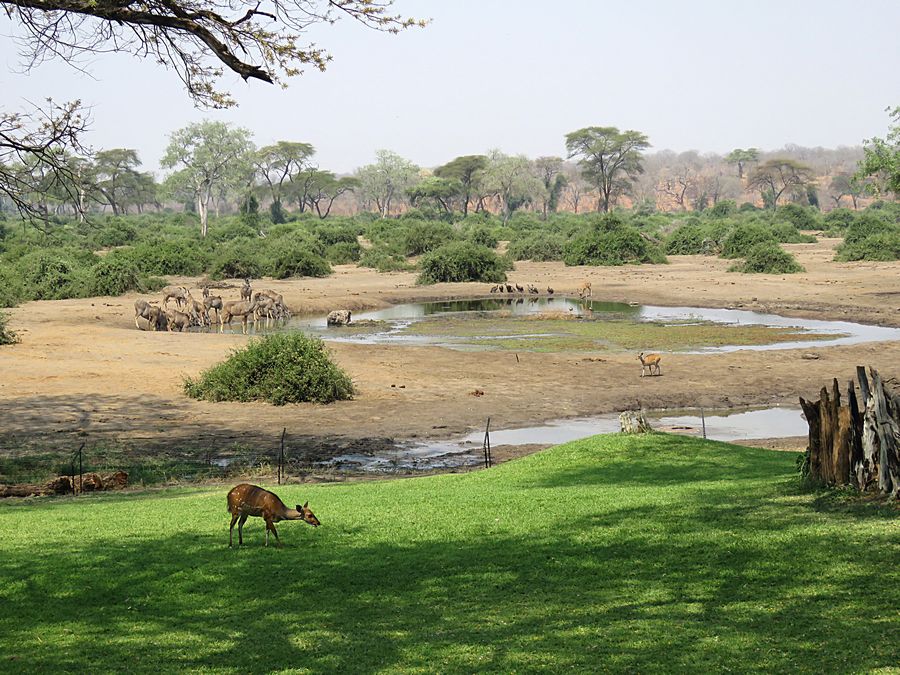
At Elephant Valley Lodge, near Chobe National Park. Unlike
the other tented camps where we stayed, this one had an
electric fence around it, so we did not have to be escorted to
our tents in the evening. Outside the electric fence was a
watering hole where numerous birds and animals came for
water. In this photo, there are kudus, white-backed vultures,
an impala, and a bushbuck at the watering hole, plus Egyptian
geese that are very hard to see. Also, there is a bushbuck
on the grass.
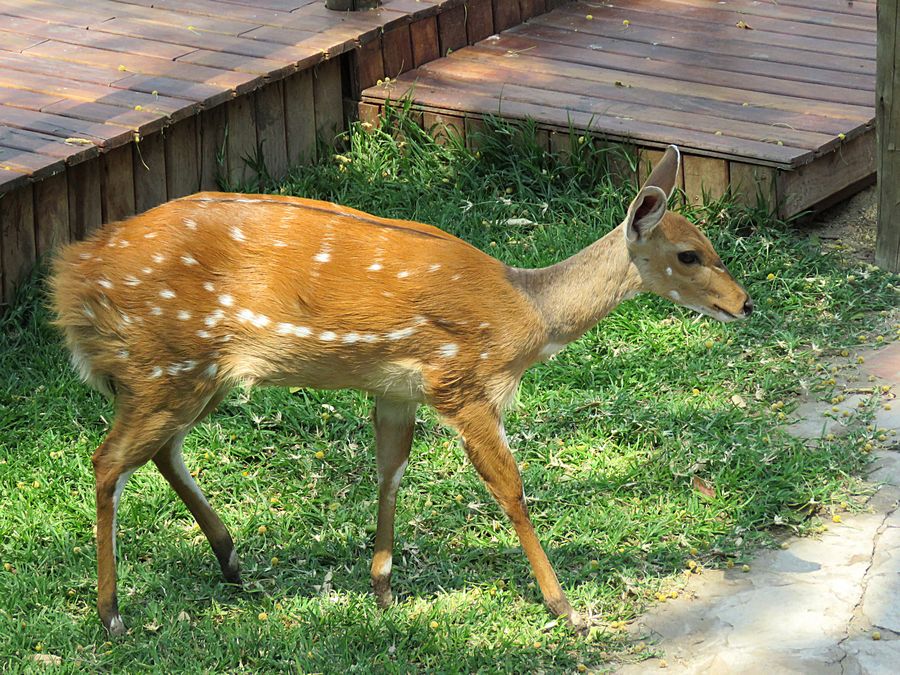
Female bushbuck inside the Lodge area. Not sure how they
got in, but there were several wandering the grounds, and
they were quite used to people.
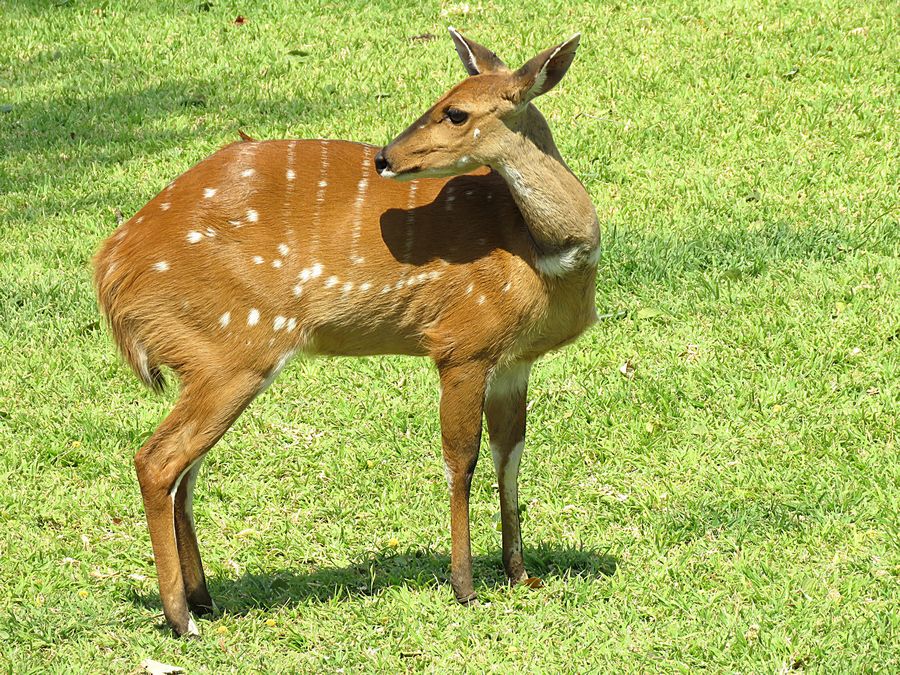
Bushbuck mainly browse, but supplement their diet with any
other plant matter they can reach. They are active throughout
the day, but tend to be nocturnal near human habitations, though
not here. They tend to be solitary, though some live in pairs.
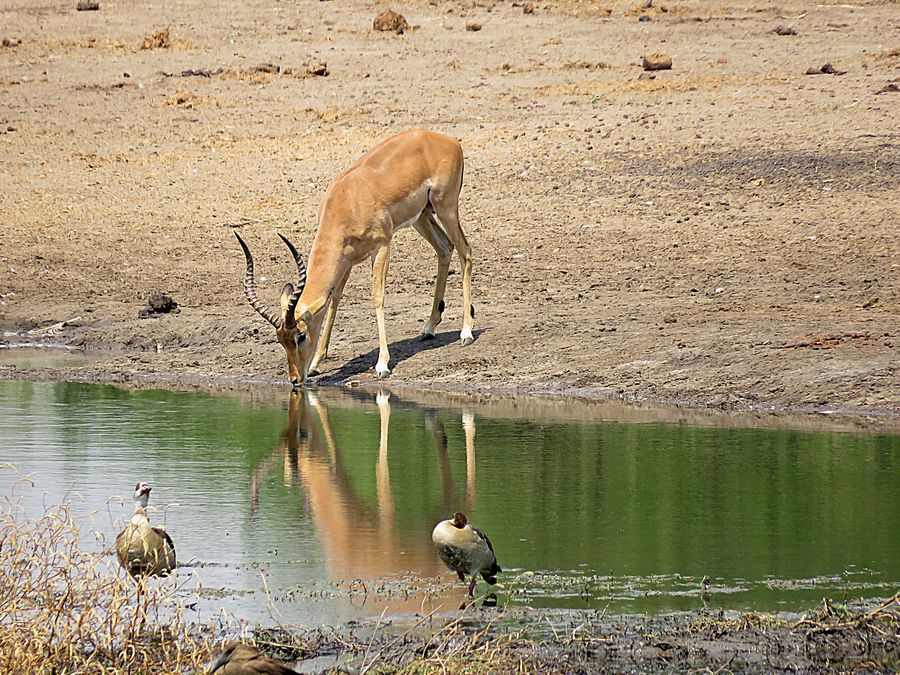
Male impala at the watering hole with Egyptian geese.
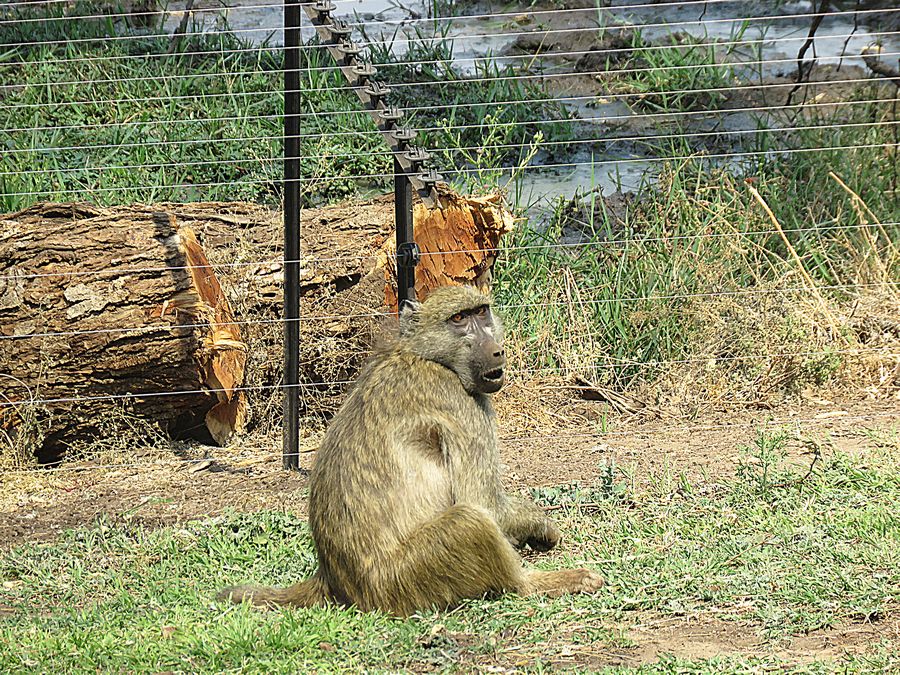
Baboons were also able to get inside the Elephant Valley
compound by simply climbing and coming down from trees.
Here is one just inside the electric fence.
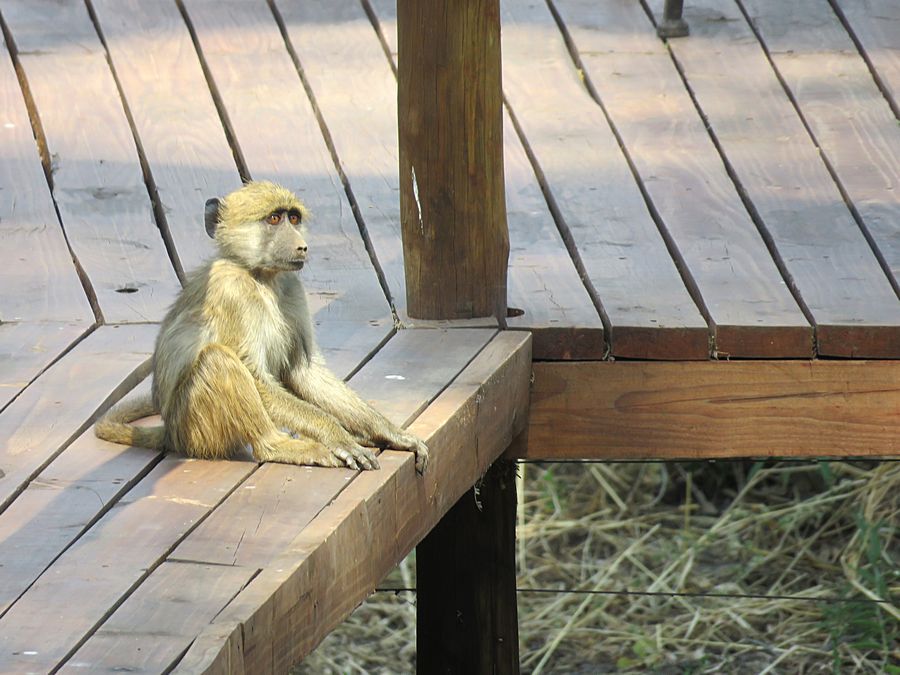
Young baboon just relaxing on a porch area at the Lodge,
that also serves as a good viewing spot of the watering hole.
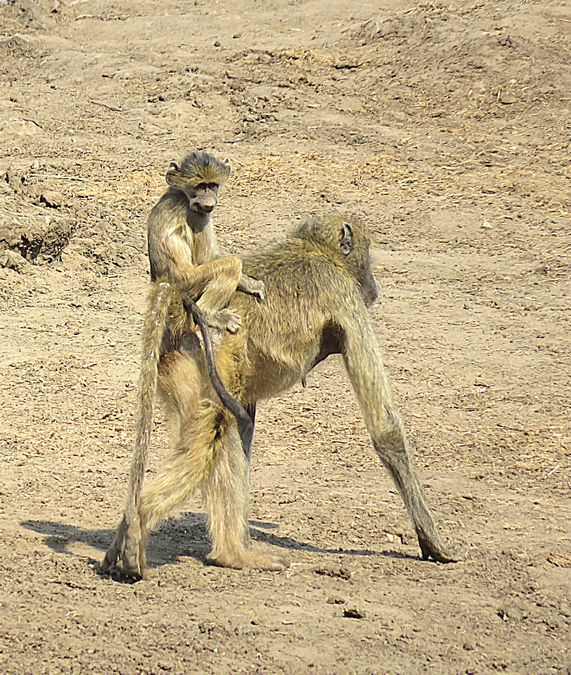
Mom and baby baboon heading to the watering hole.
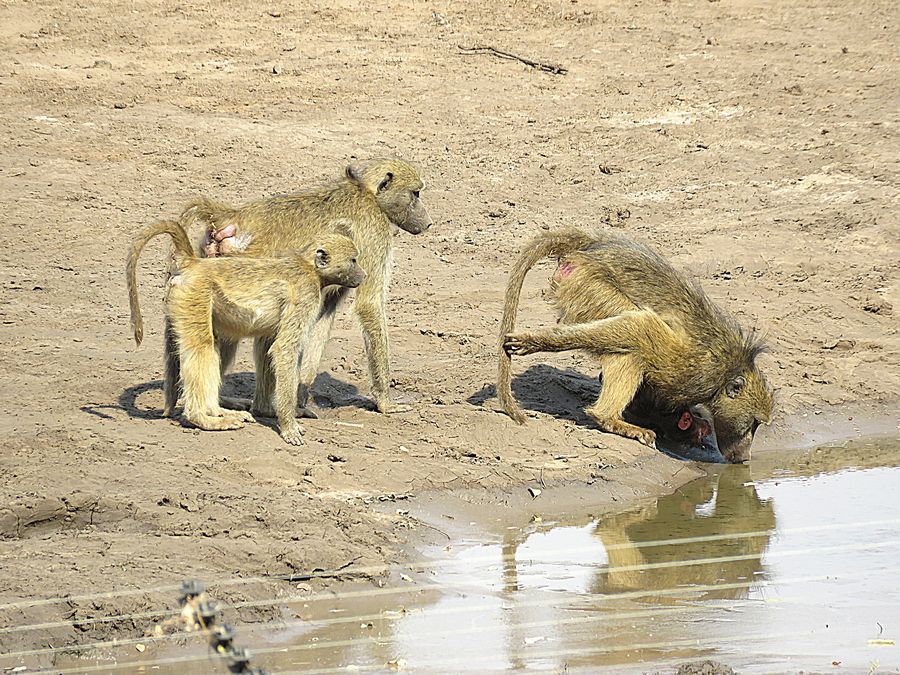
Female baboon drinking water with a newborn clinging to
her underside, while another adult female and her older
child watch.
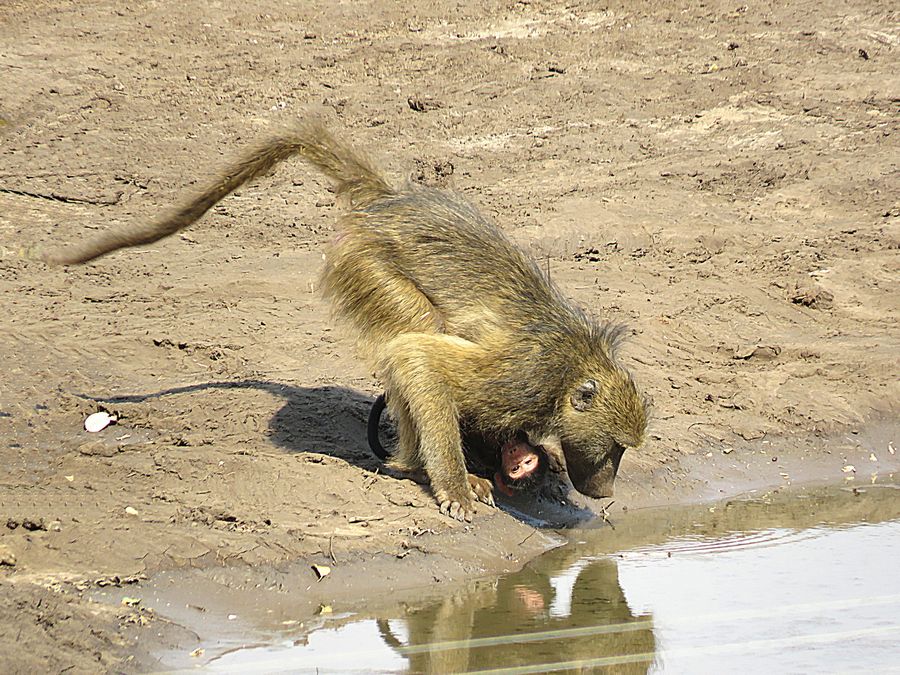
Although the newborn baboon infant is not able to run about
on its own, it is born with a very strong gripping ability. This
grip enables the infant to help its mother carry it all day. The
infant clings to the fur on its mother's belly. Its mother can
then carry the infant while she stays within the safety of her
traveling group and forages for food, which requires use of
all 4 limbs. The infant clings in a perfect position to suckle
whenever it chooses to.
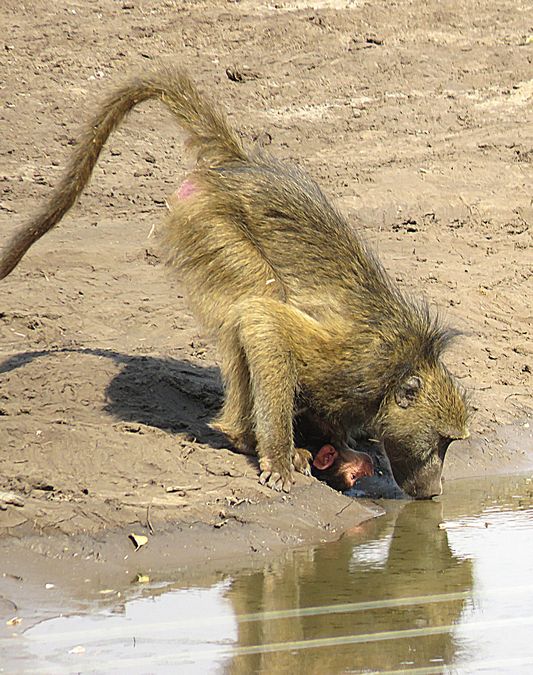
Between an infant's first and second birthday, it makes the
transition from infancy to being a juvenile. By the time a
baboon is two years old, it usually has a younger sibling
and is pretty much on its own most of the time--feeding,
exploring, and playing with other juveniles. It usually sleeps
with an older sister or brother, or perhaps its mother and her
new infant, at night.
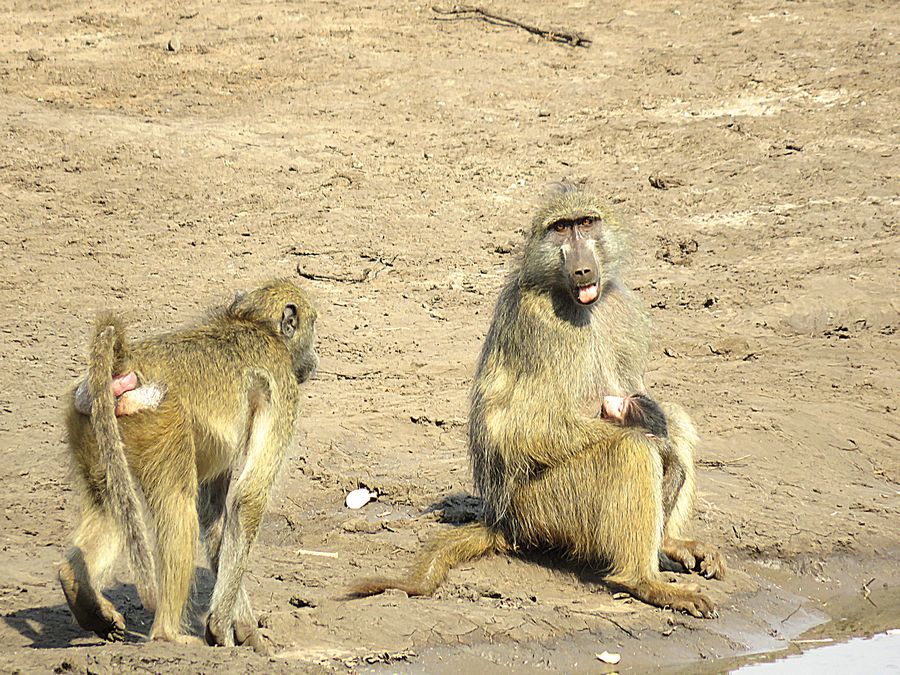
Mom caressing her baby after drinking from the water.
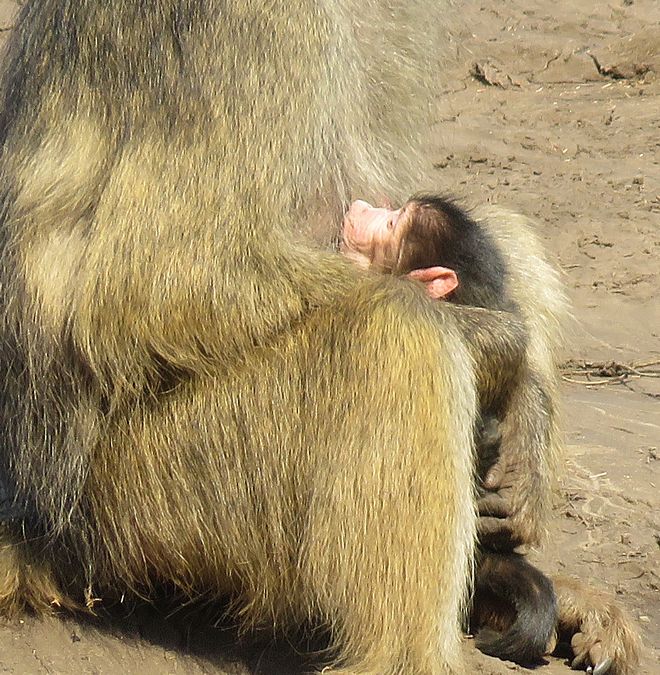
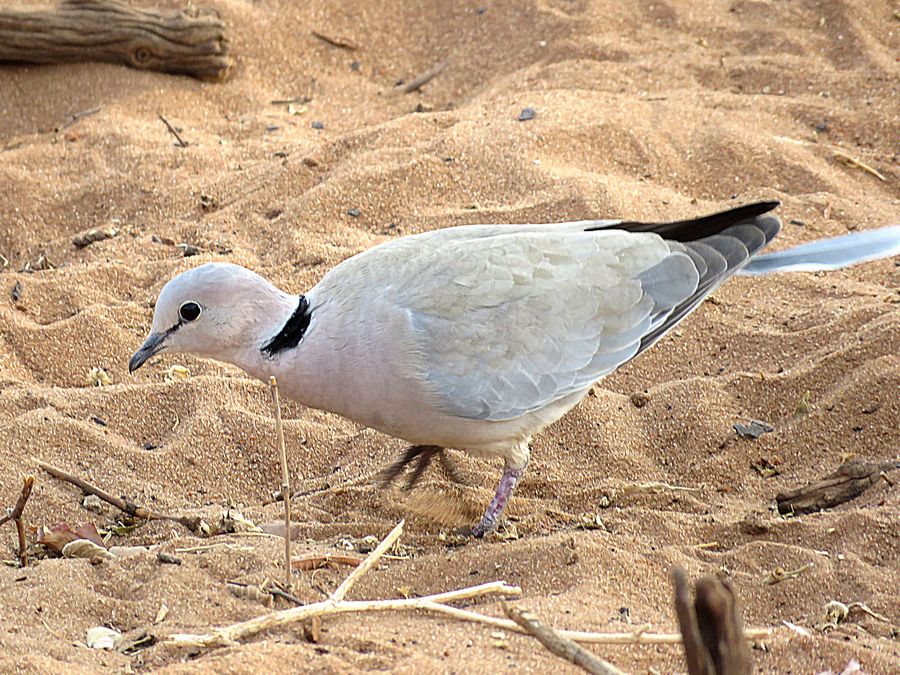
Cape Turtle Dove near the watering hole.
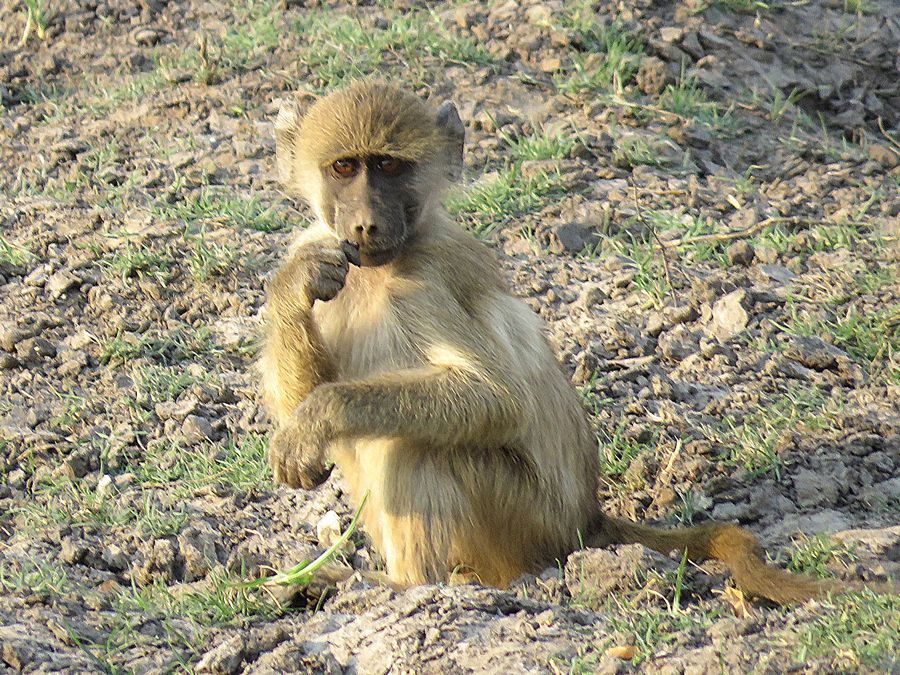
Young baboon contemplating life?
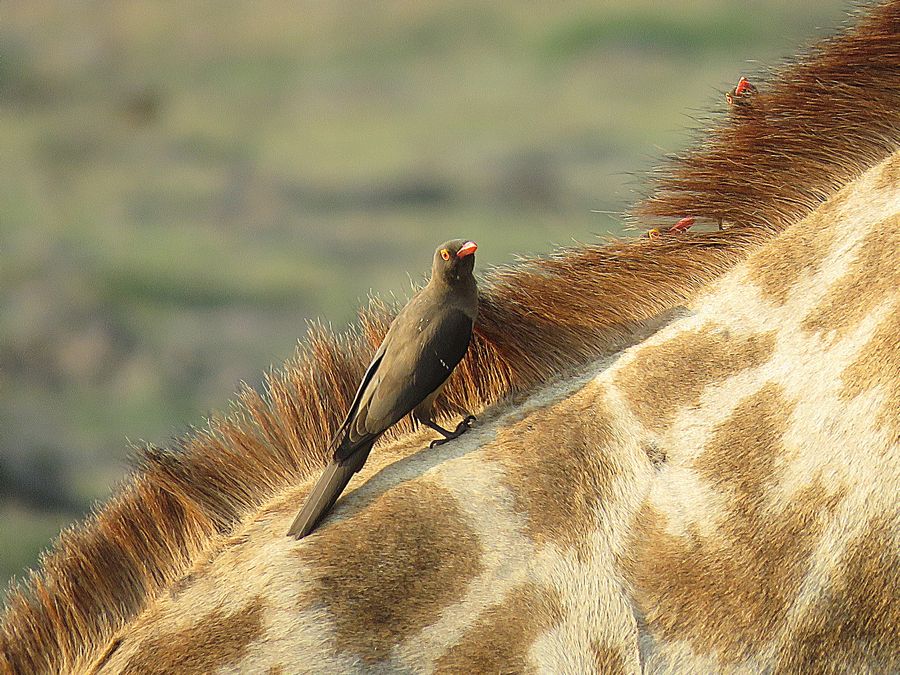
While we stayed 3 nights at Elephant Valley Lodge,
we daily drove the short distance to Chobe National Park.
Here is a Red-billed Oxpecker on a giraffe's neck and
a couple more that can barely be seen, looking for ticks, etc.
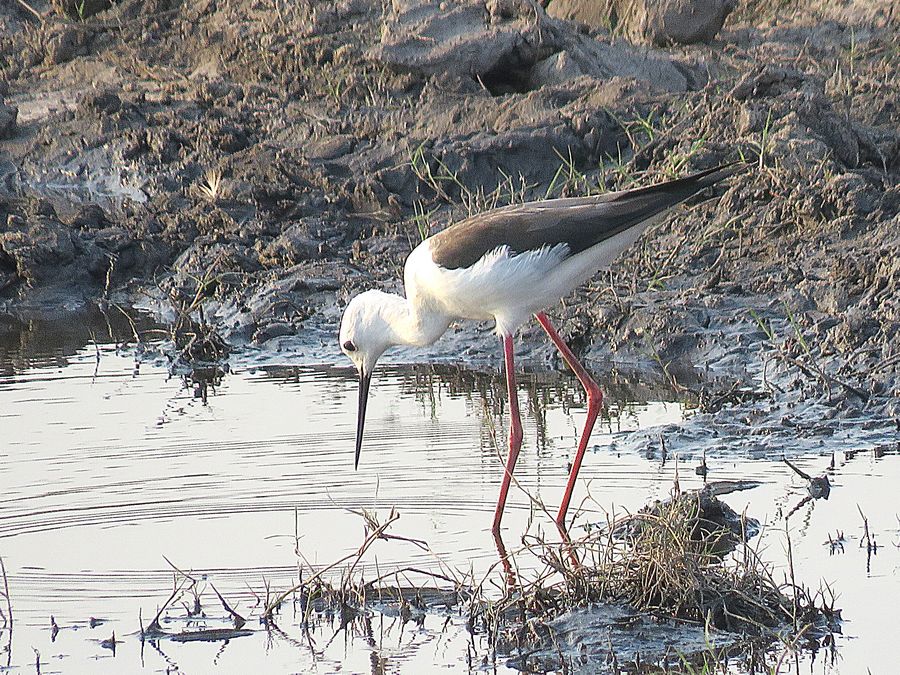
Black-winged stilt bending over to probe the water.
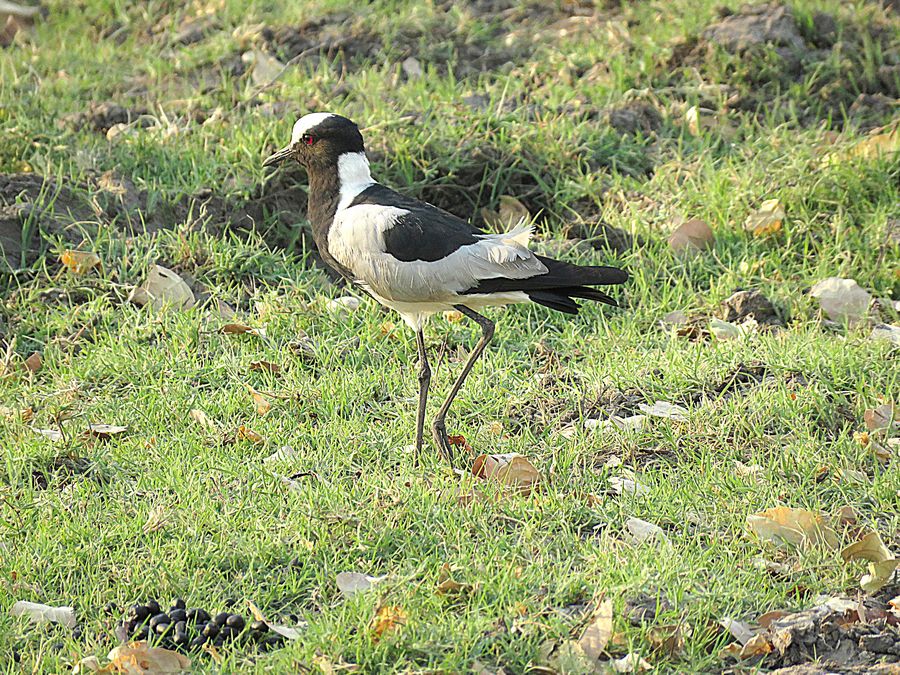
Blacksmith Lapwing seen near water.
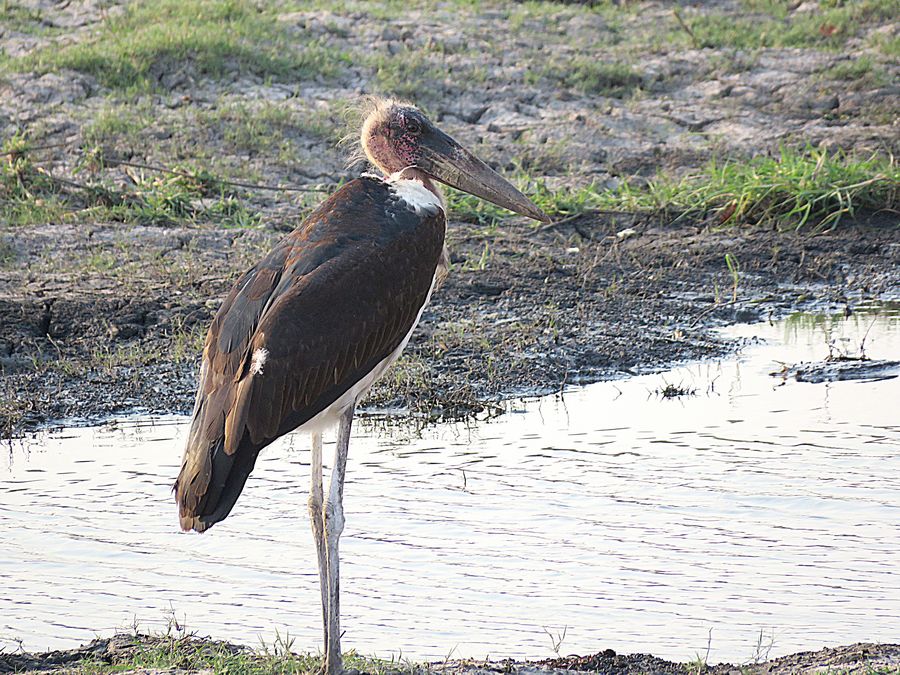
Marabou stork - also saw a lot of these at the Okavango Delta.
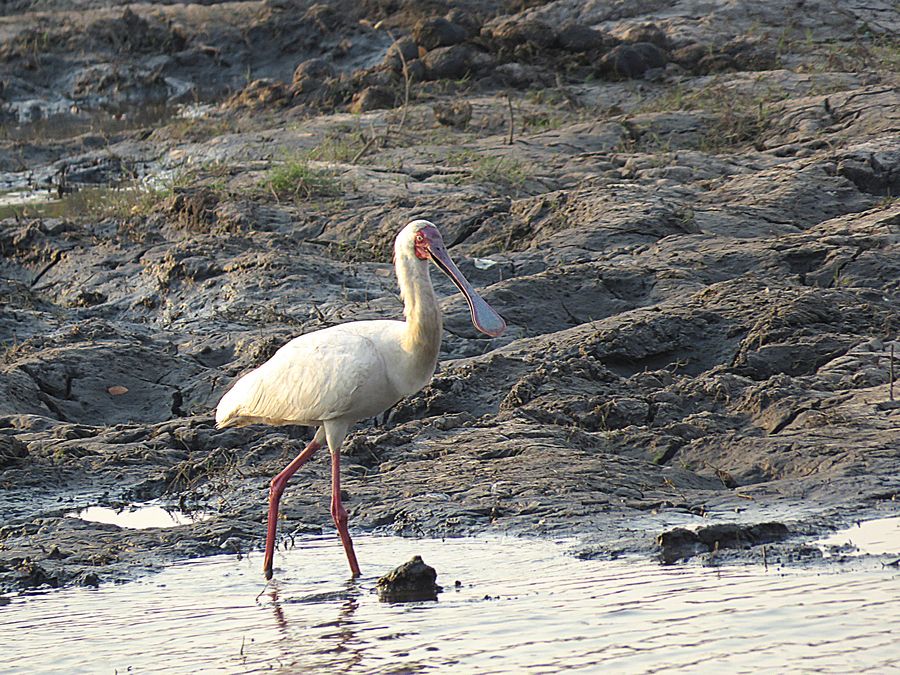
African Spoonbill - large, all-white water bird with a distinctive
spoon-shaped bill. The long legs and bare face of adults are
pink.
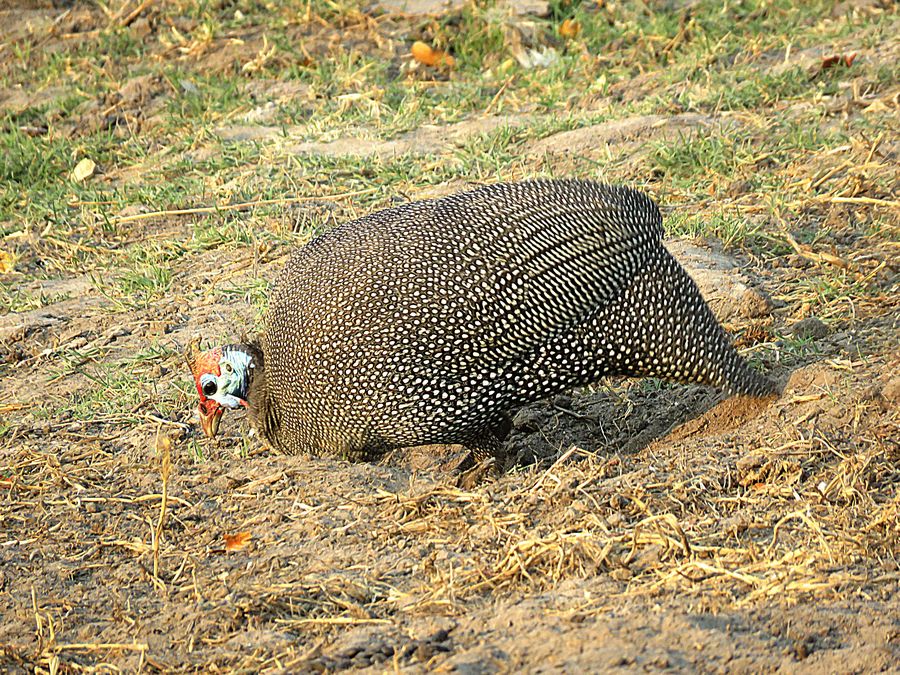
Helmeted guineafowl - We saw a lot of these at Chobe,
especially along the Chobe River. This one is digging in
the dirt looking for food such as beetles, seeds.
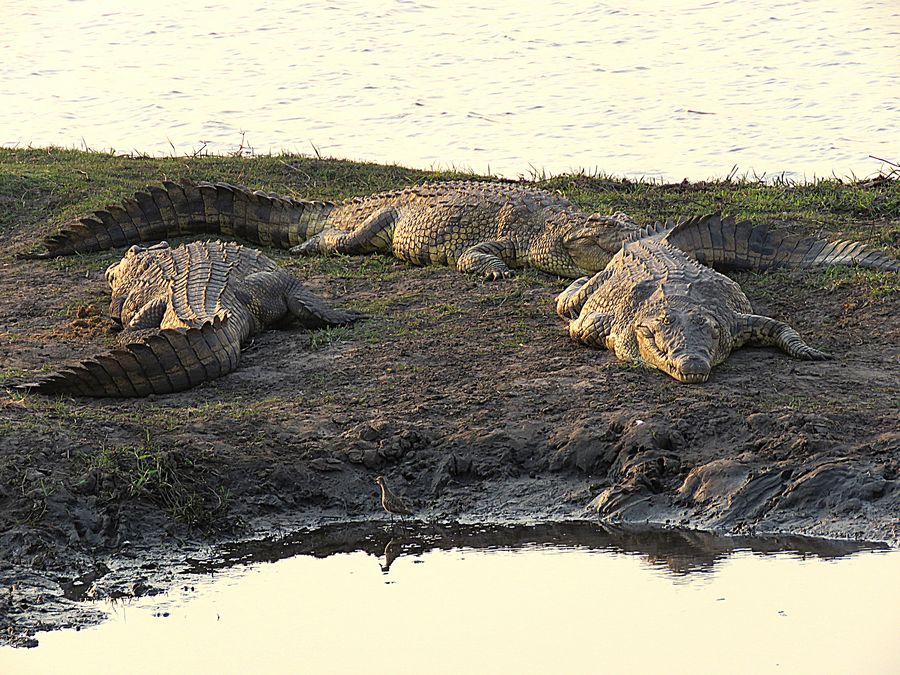
Three crocodiles near the Chobe River. We usually saw
crocodiles by themselves.
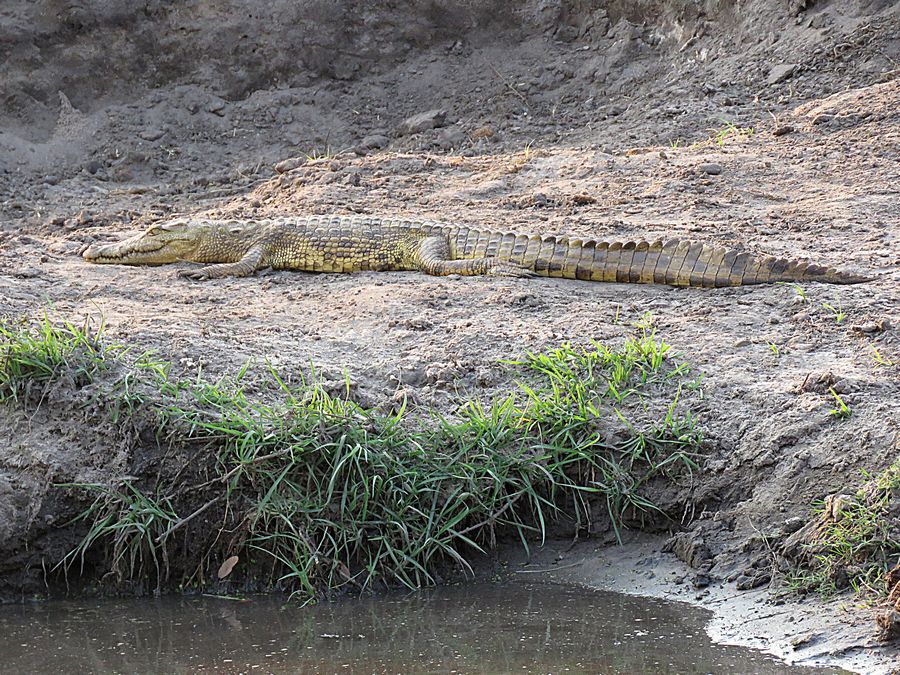
A juvenile crocodile. Juveniles feed on small animals such
as frogs.
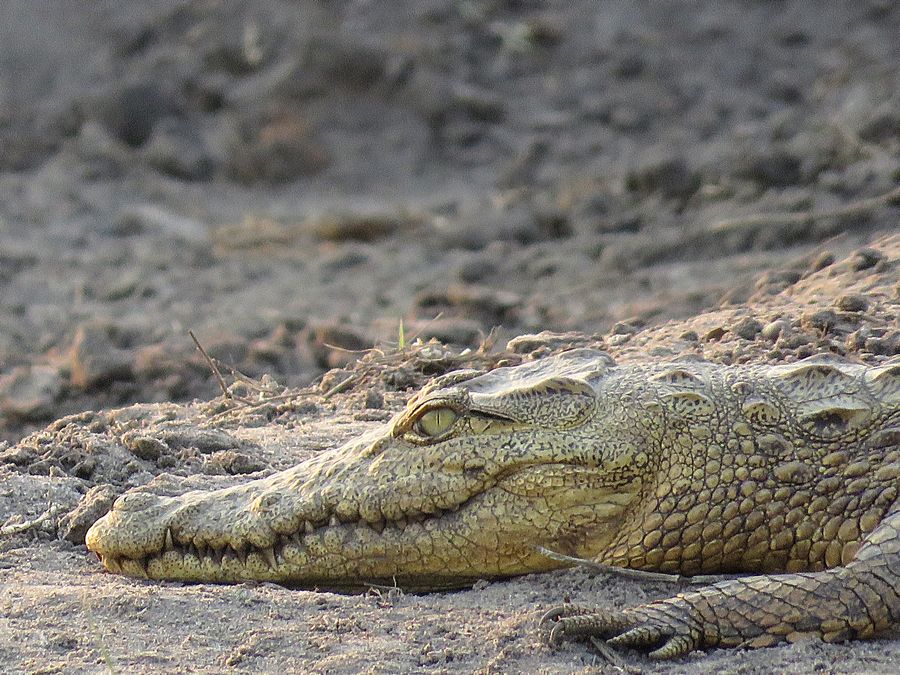
Closeup of the juvenile's head. Crocs lay eggs in sand
burrows along river sides that are guarded by the female
for up to three months.
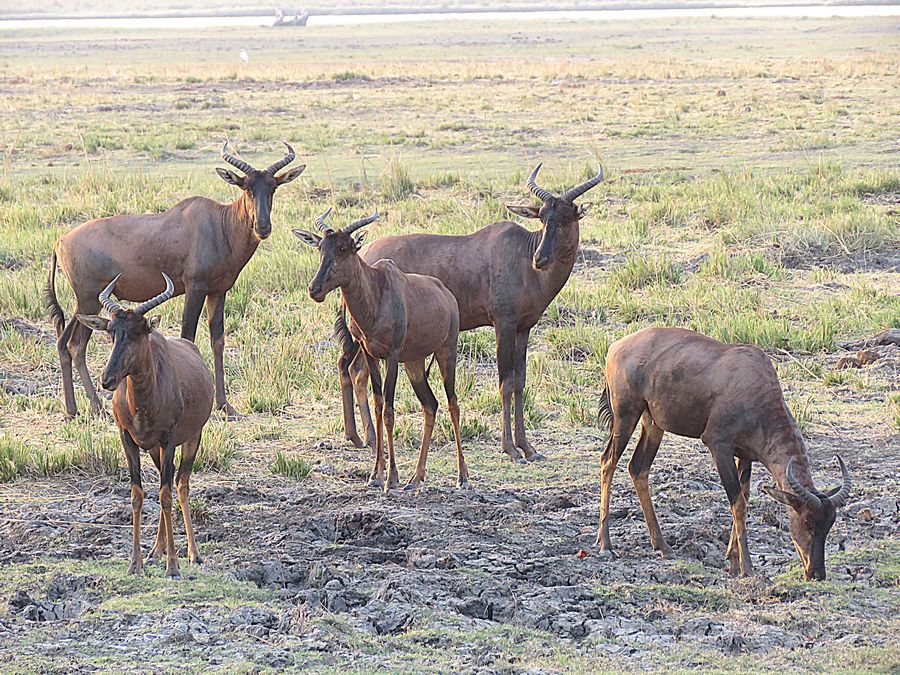
Tsessebe, also seen at Okavango Delta. Both sexes grow
horns, but male horns grow larger.
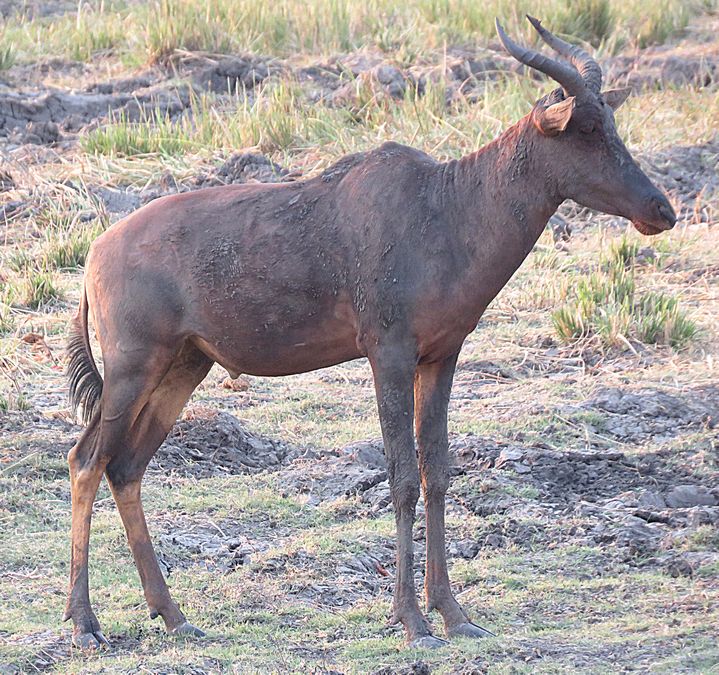
Tsessebe are grazers and prefer feeding on new shoots. They
are known to be the first animals to arrive in an area after a burn,
where they feed on the new growth.
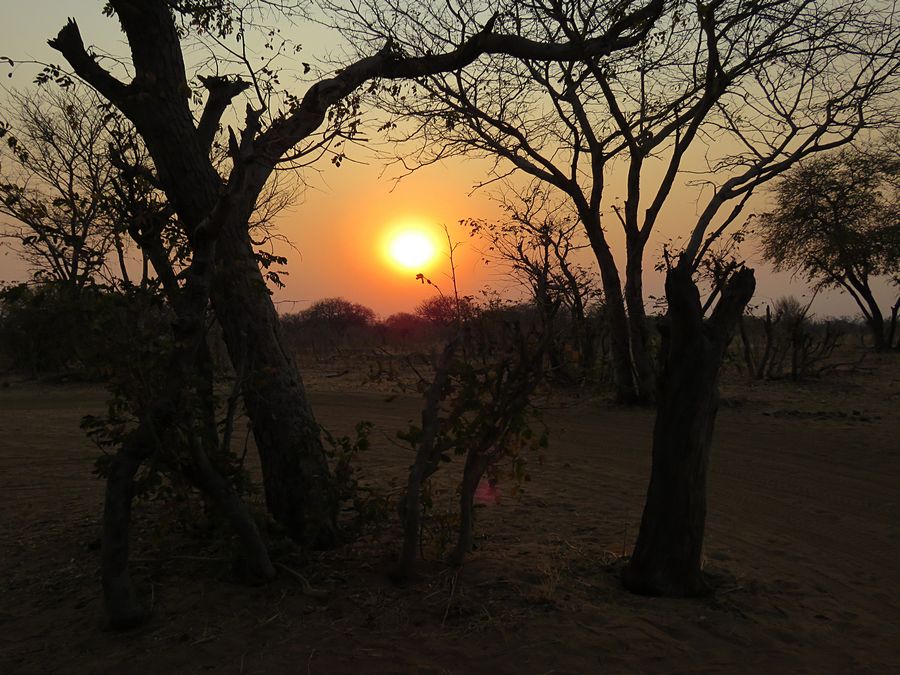
Throughout the trip, we often went out late afternoon, then
took a snack and drink break watching the sun go down, before
heading back to camp.
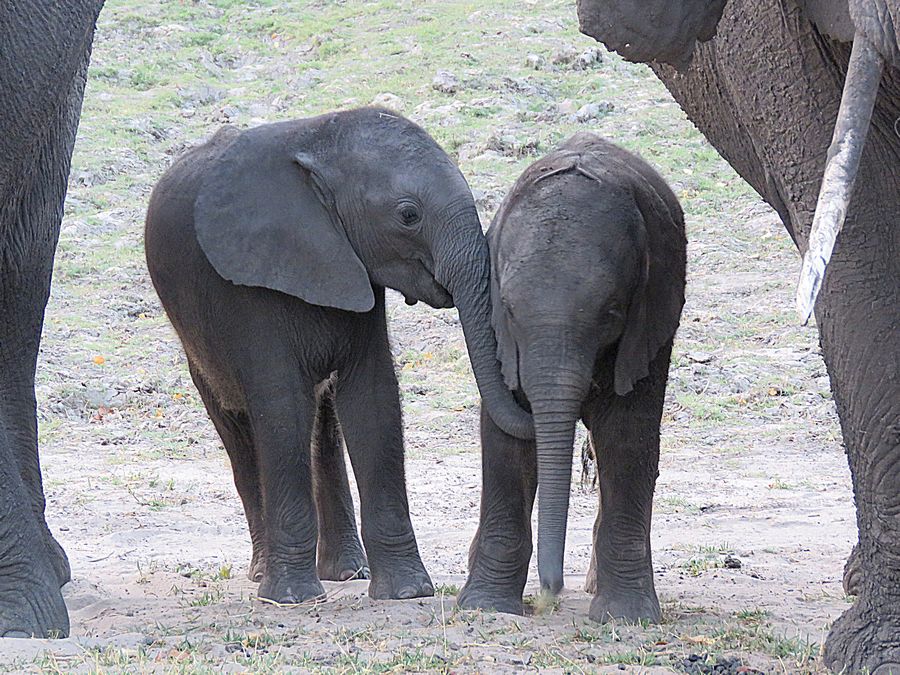
2 baby elephants seen while driving back to Elephant Valley Lodge.
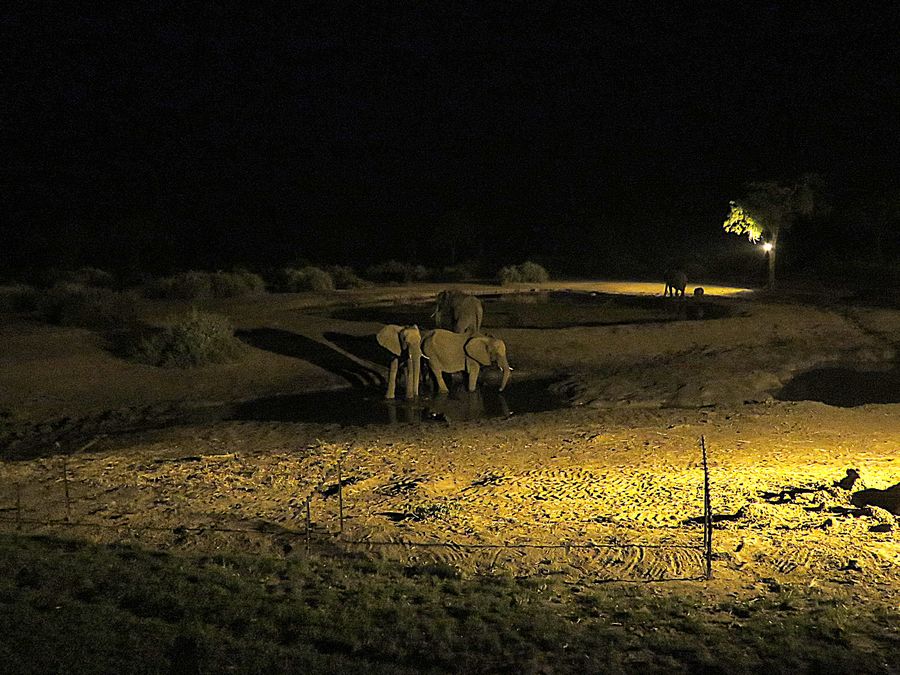
At night, while having dinner outdoors at the Lodge, we watched
elephants coming to the watering hole. The Lodge had spotlights
lighting up the area.
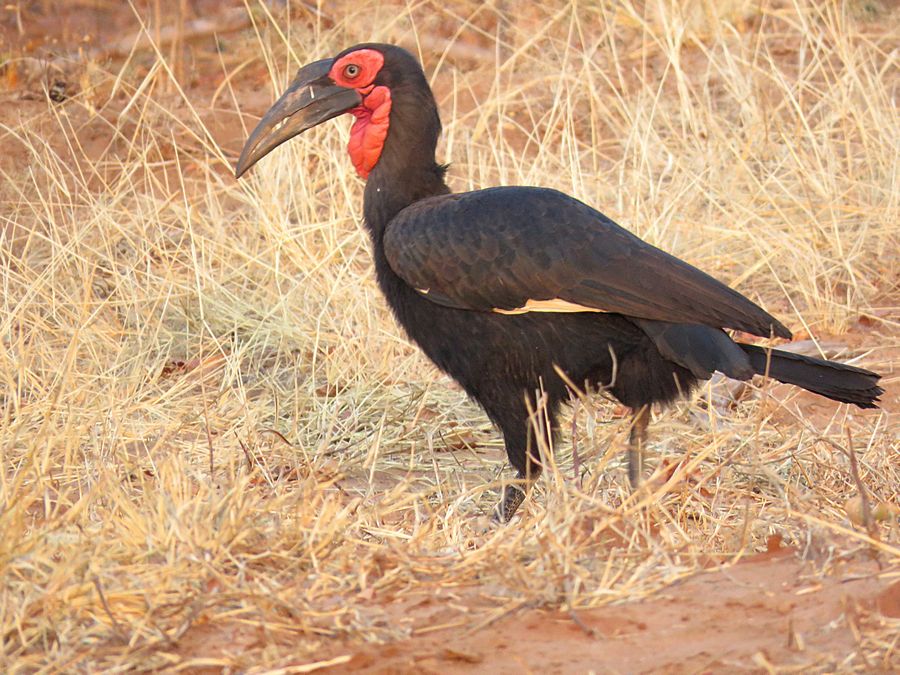
A ground hornbill in Chobe seen the following morning. Has bare skin
around
the eyes and
throat that is red. When it flies, white flight
feathers are seen.
Nests in a large tree hole.
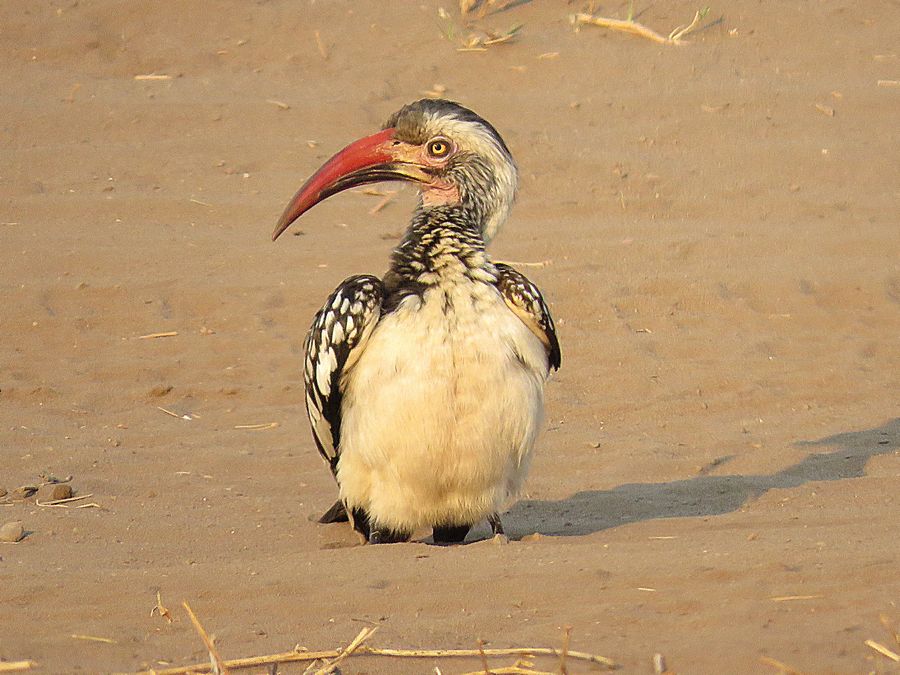
Red-billed hornbill - a small, black and white hornbill with a
red bill. In contrast to the ground hornbill, there is no bare
skin on the face. Spends a lot of time on the ground searching
for beetles. Also nests in a tree hole.
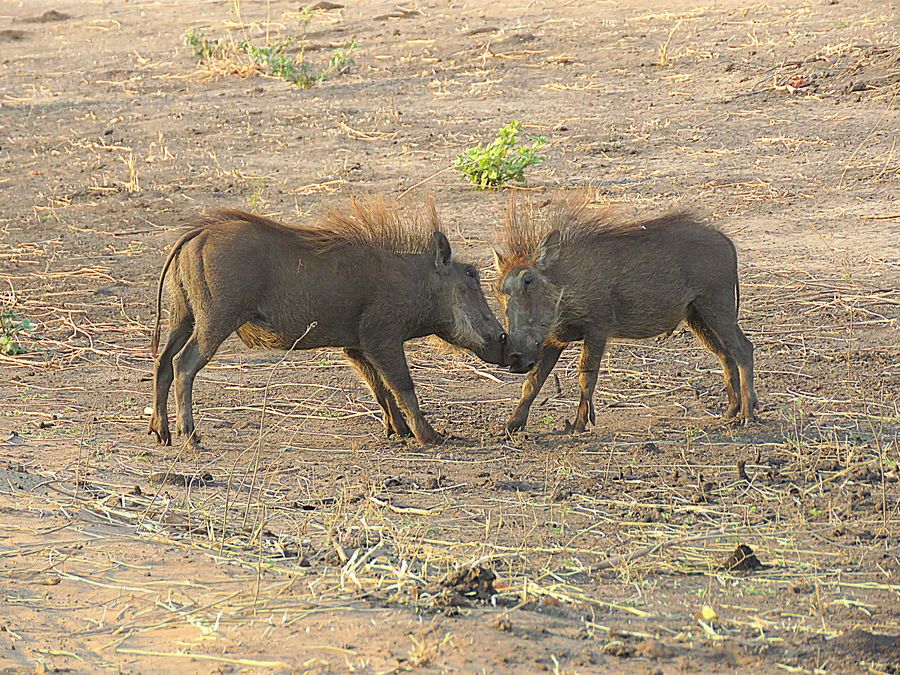
2 young warthogs play fighting.
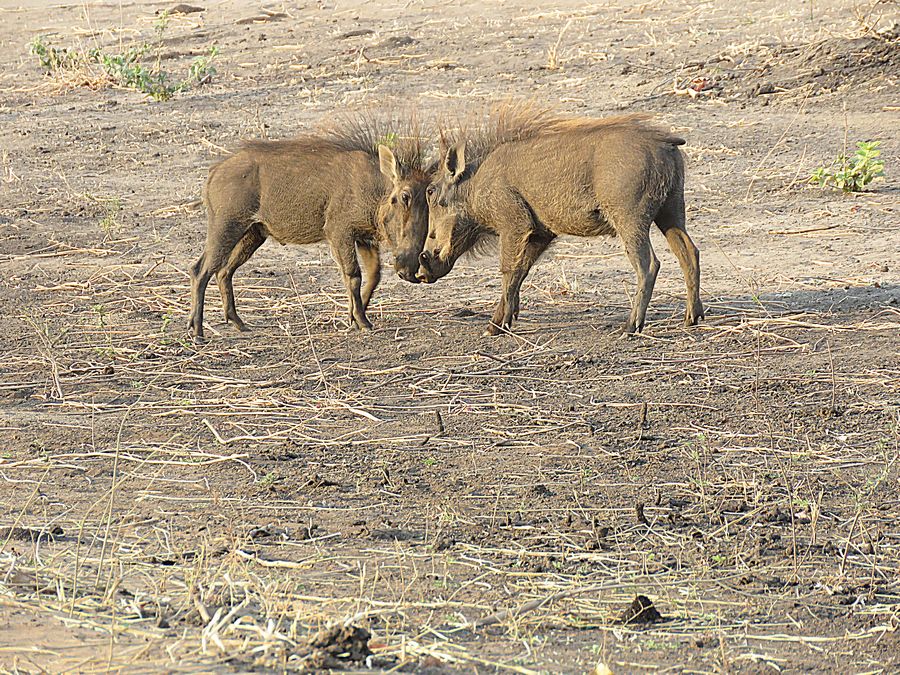
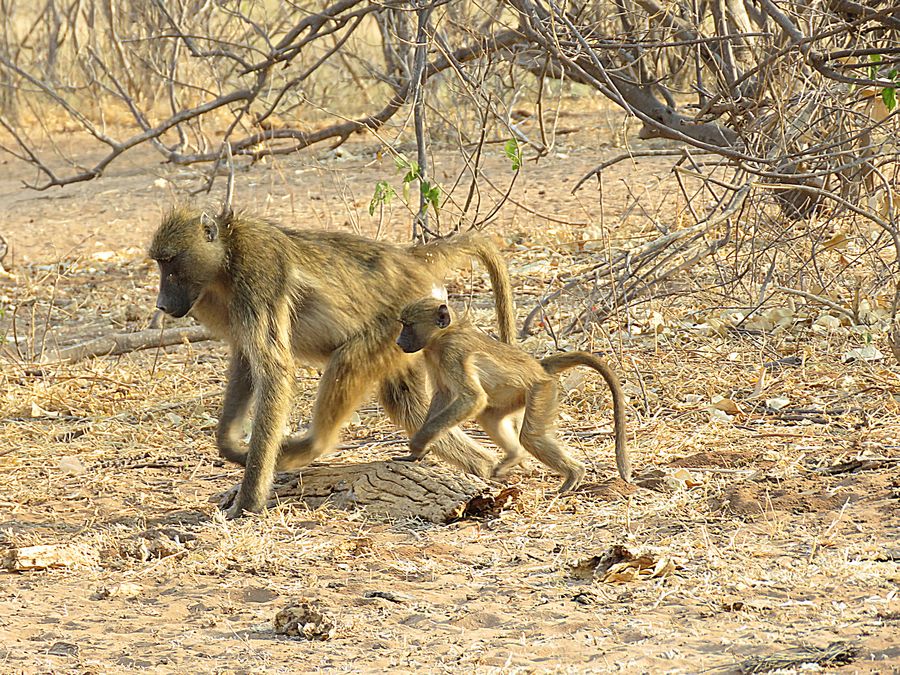
Mom and juvenile baboon scurrying along the side of the road in
Chobe; they soon crossed the road in front of our vehicle.
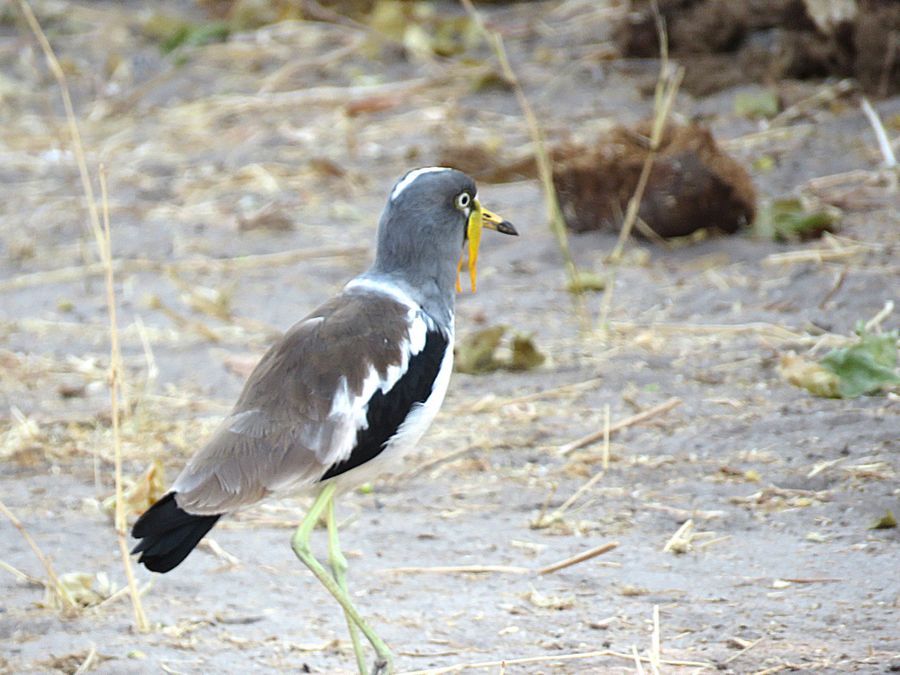
Wattled plover - a gray brown plover with a pair of floppy yellow
wattles at the base of the yellow bill. Has long yellow legs and a
small white patch on the crown. Usually occurs near water. Eggs
are laid in short grass or on bare ground.
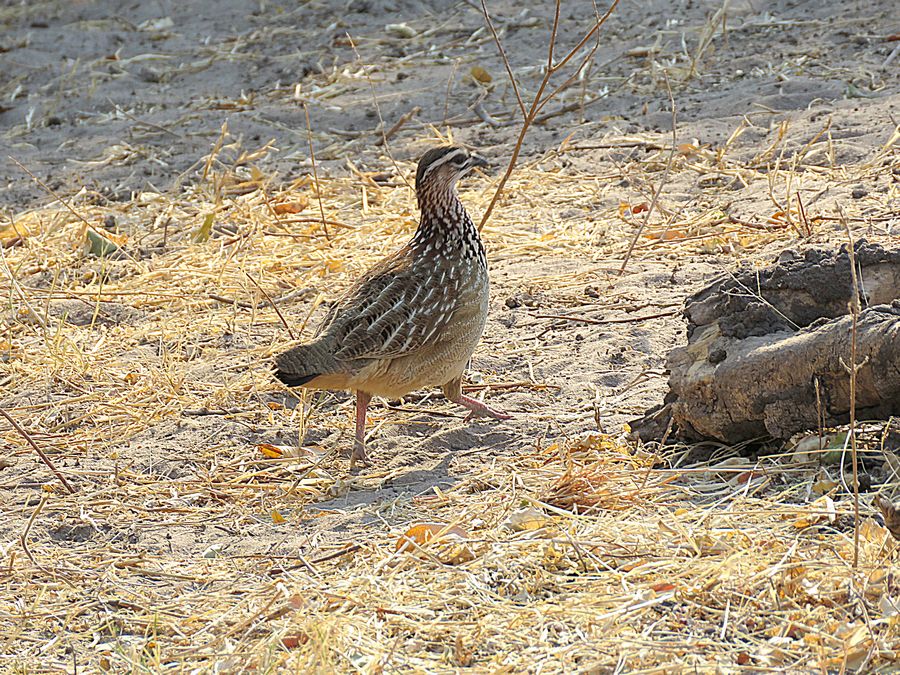
Crested Francolin - fawn, rust and cream colored with a
broad white eye stripe and dark line through the eye. The crown
is dark, the bill gray, and the legs pink-orange. Its chief food are
termites and other insects. Eggs are laid on the ground in
dense vegetation.
Link to Part Six, Page Two - Chobe National Park, Botswana
Pat's Home Page